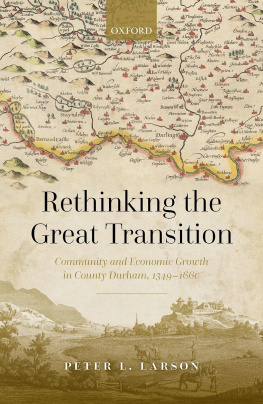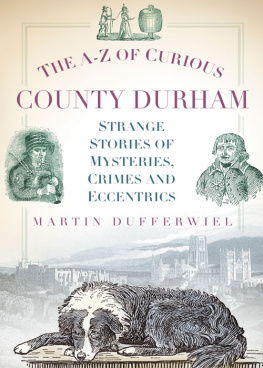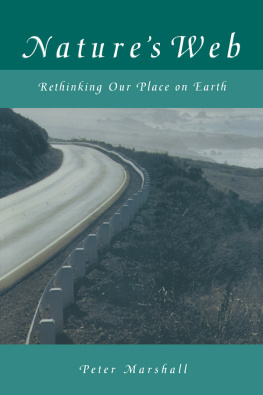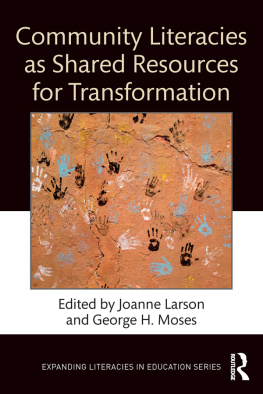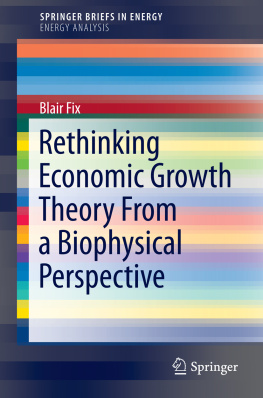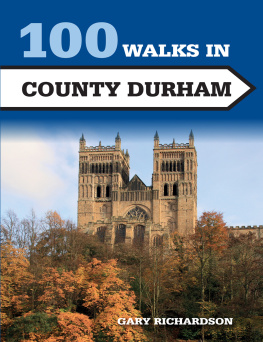Peter L. Larson - Rethinking the Great Transition: Community and Economic Growth in County Durham, 1349-1660
Here you can read online Peter L. Larson - Rethinking the Great Transition: Community and Economic Growth in County Durham, 1349-1660 full text of the book (entire story) in english for free. Download pdf and epub, get meaning, cover and reviews about this ebook. year: 2021, publisher: OxfordUP, genre: Politics. Description of the work, (preface) as well as reviews are available. Best literature library LitArk.com created for fans of good reading and offers a wide selection of genres:
Romance novel
Science fiction
Adventure
Detective
Science
History
Home and family
Prose
Art
Politics
Computer
Non-fiction
Religion
Business
Children
Humor
Choose a favorite category and find really read worthwhile books. Enjoy immersion in the world of imagination, feel the emotions of the characters or learn something new for yourself, make an fascinating discovery.
- Book:Rethinking the Great Transition: Community and Economic Growth in County Durham, 1349-1660
- Author:
- Publisher:OxfordUP
- Genre:
- Year:2021
- Rating:3 / 5
- Favourites:Add to favourites
- Your mark:
- 60
- 1
- 2
- 3
- 4
- 5
Rethinking the Great Transition: Community and Economic Growth in County Durham, 1349-1660: summary, description and annotation
We offer to read an annotation, description, summary or preface (depends on what the author of the book "Rethinking the Great Transition: Community and Economic Growth in County Durham, 1349-1660" wrote himself). If you haven't found the necessary information about the book — write in the comments, we will try to find it.
Peter L. Larson: author's other books
Who wrote Rethinking the Great Transition: Community and Economic Growth in County Durham, 1349-1660? Find out the surname, the name of the author of the book and a list of all author's works by series.
Rethinking the Great Transition: Community and Economic Growth in County Durham, 1349-1660 — read online for free the complete book (whole text) full work
Below is the text of the book, divided by pages. System saving the place of the last page read, allows you to conveniently read the book "Rethinking the Great Transition: Community and Economic Growth in County Durham, 1349-1660" online for free, without having to search again every time where you left off. Put a bookmark, and you can go to the page where you finished reading at any time.
Font size:
Interval:
Bookmark:


Great Clarendon Street, Oxford, OX2 6DP, United Kingdom
Oxford University Press is a department of the University of Oxford. It furthers the Universitys objective of excellence in research, scholarship, and education by publishing worldwide. Oxford is a registered trade mark of Oxford University Press in the UK and in certain other countries
Peter L. Larson 2022
The moral rights of the author have been asserted
First Edition published in 2022
Impression: 1
All rights reserved. No part of this publication may be reproduced, stored in a retrieval system, or transmitted, in any form or by any means, without the prior permission in writing of Oxford University Press, or as expressly permitted by law, by licence or under terms agreed with the appropriate reprographics rights organization. Enquiries concerning reproduction outside the scope of the above should be sent to the Rights Department, Oxford University Press, at the address above
You must not circulate this work in any other form and you must impose this same condition on any acquirer
Published in the United States of America by Oxford University Press
198 Madison Avenue, New York, NY 10016, United States of America
British Library Cataloguing in Publication Data
Data available
Library of Congress Control Number: 2021947628
ISBN9780192849878
ebook ISBN9780192666819
DOI: 10.1093/oso/9780192849878.001.0001
Printed and bound in Great Britain by Clays Ltd, Elcograf S.p.A.
Links to third party websites are provided by Oxford in good faith and for information only. Oxford disclaims any responsibility for the materials contained in any third party website referenced in this work.
Boldon BookDomesday Book Supplementary, vol. 35: Boldon Book, Northumberland and Durham ed. by David Austin (Stroud: Phillimore & Co., 1982).
CCBChurch Commission Deposit of Durham Bishopric Estate Records, Durham University Library, Archives & Special Collections.
DHCDurham Bishopric Halmote Court Records, Durham University Library, Archives & Special Collections.
DPRDurham Probate Records, Durham University Library, Archives & Special Collections.
Durham Hearth TaxCounty Durham Hearth Tax Assessment, Lady Day 1666, ed. by Adrian Green, Elizabeth Parkinson, and Margaret Spufford (London: British Record Society, 2006).
Hatfields SurveyBishop Hatfields Survey, ed. by William Greenwell, Surtees Society, vol. 32 (Durham: George Andrews,1857; reprinted London: W. Dawson and sons, 1967).
Parliamentary SurveysParliamentary Surveys of the Bishopric of Durham, vol. II, ed. by David Kirby, Surtees Society, vol. 185 (Gateshead: Northumberland Press, 1929).
TNA: DURHRecords of the Palatinate of Durham: Chancery Court: Cursitors Records, The National Archives: Public Record Office, Kew, London.
Wills and InventoriesWills and Inventories from the Register at Durham, vol. I, ed. by James Raine, Surtees Society, vol. 2 (London: J.B. Nichols, 1835).
Wills and InventoriesWills and Inventories from the Register at Durham, vol. II, ed. by William Greenwell, Surtees Society, vol. 38 (Durham: Andrews, 1860).
Wills and InventoriesWills and Inventories from the Register at Durham, vol. III, ed. by J. C. Hodgson, Surtees Society, vol. 112 (Durham: Andrews, 1906).
Wills and InventoriesWills and Inventories from the Register at Durham, vol. IV, ed. by Herbert Maxwell Wood, Surtees Society, vol. 142 (Durham: Andrews, 1929).
Note on currency:
The primary units of curreny in England in this period were:
A crown was worth 5vs. The mark was a unit of account worth 13s. 4d.
Note on spelling:
Note on dates:
This book has been a long time in the making. I am grateful to the Huntington Library and British Academy for a Short-Term Fellowship that let me begin this project, and to the University of Central Florida for additional support. Jeffrey Moore, Dean of the College of Arts & Humanities at the University of Central Florida, has been consistently supportive as I finished writing while chairing a department.
The research for this book took place at several archives. The archivists, librarians, assistants, and those who have reproduced documents are invaluable in historical research. The staff of Durham University Archives & Special Collections deserve especial praise for their unstinting support and patience through the years. Durham County Record Office, Lambeth Palace Library, London School of Economics, and The National Archive in Kew have likewise been welcoming and professional; I simply have not had the pleasure of spending more time there. I have been fortunate to have been supported by numerous research assistants at UCF: Danielle Aguirre, Luke Bohmer, Jessica Hoeschen, and Alexis Rodriguez. Ryan Wicklund at Durham University photographed numerous probate documents for me when administrative work limited my travel. Matthew Patsis created the maps in GIS.
I have benefitted from the support, encouragement, and friendly critique of many colleagues. I am especially indebted to James Davis and Ben Dodds, who read the entire manuscript. The support I have received has been invaluable in keeping me going; in this regard, notably from Jim Masschaele, Mark Bailey, Judith Bennett, Chris Briggs, Chris Dyer, Maryanne Kowaleski, and Steve Rigby, but also many others. I have also had productive discussions on Durham with
Alex Brown. Much of this is possible thanks to the triennial Anglo-American Seminar on the Medieval Economy and Society, founded by Bruce M.S. Campbell and convened by Phillipp Schofield for the past several sessions. The seminar has been a delightfully warm and intellectually stimulating space to test out ideas.
The anonymous readers for the proposal and manuscript prodded me to expand the scope of my argument: they saw more potential than I did. Along with the patience of the editors at OUP, who let this project develop at its own pace, they have made the book all the stronger. This book was completed and revised during the COVID-19 pandemic, and I gratefully acknowledge the tireless work of the Interlibrary Loan staff at the University of Central Florida Library and libraries around the country.
My wife likely knows this book better than I do, and my gratitude knows no bounds. The evolution of my writing over the years owes much to herjust ask my undergraduate and graduate advisors what my writing used to be like. She has provided intellectual and emotional support: a sounding board, reader, and answerer of apparently random questions (how much does a pound of saffron cost today?). It is good to be married to a librarian with an interest in English history.
Font size:
Interval:
Bookmark:
Similar books «Rethinking the Great Transition: Community and Economic Growth in County Durham, 1349-1660»
Look at similar books to Rethinking the Great Transition: Community and Economic Growth in County Durham, 1349-1660. We have selected literature similar in name and meaning in the hope of providing readers with more options to find new, interesting, not yet read works.
Discussion, reviews of the book Rethinking the Great Transition: Community and Economic Growth in County Durham, 1349-1660 and just readers' own opinions. Leave your comments, write what you think about the work, its meaning or the main characters. Specify what exactly you liked and what you didn't like, and why you think so.

